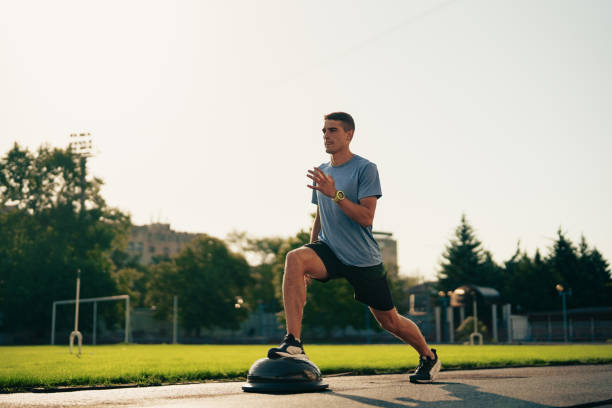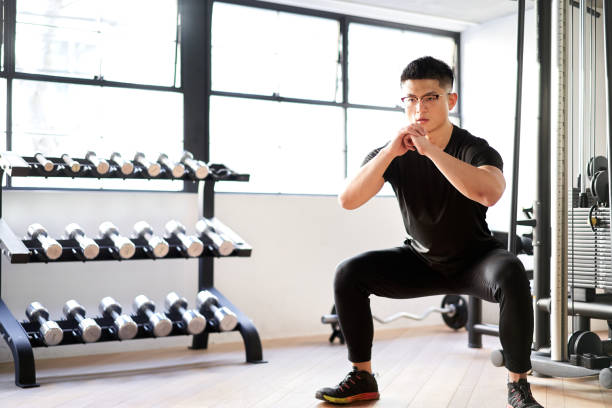Introduction: Why Fitness Myths Need to Be Busted
Getting in shape shouldn’t be confusing. But with so much information online, it’s hard to know what’s true. One person says cardio is the answer. Another says it’s all about weight training. Some tell you to cut all carbs. Others say eat more fat.
The truth is, fitness is not one-size-fits-all. Your body, goals, and lifestyle all play a role. Cardio helps your heart and burns calories, but strength training builds muscle and boosts your metabolism. Cutting carbs might work for some, but others need them for energy. And while healthy fats are important, eating too much of any food can lead to weight gain. Knowing the science behind these claims helps you make smarter choices that actually work.
In this post, we bust the most common fitness myths—using real science. You’ll learn what really works so you can train smarter, not harder.
Myth #1: You Have to Work Out Every Day to See Results
The Truth: Rest Is Just as Important as Exercise
You don’t need to hit the gym 7 days a week. In fact, your body needs time to rest and repair after workouts.
Rest is just as important as exercise. When you work out, your muscles get tiny tears. Rest days give your body time to heal and grow stronger. Working out too much can lead to burnout, injury, or slower progress. Most experts recommend taking at least one or two rest days each week. You can still stay active—go for a walk, stretch, or do light yoga. But don’t skip recovery. It’s part of the process.
Science says:
- Muscle grows during rest, not just training (source: NIH)
- Overtraining can lead to burnout or injury
Better tip:
Aim for 3 to 5 workouts a week, and include rest days or light activities like walking or stretching.

Myth #2: Cardio Is the Only Way to Lose Weight
The Truth: Strength Training Burns Calories Too
Many people think running or cycling is the best way to lose fat. But strength training also boosts your metabolism.
Cardio burns calories during the workout, which helps with fat loss. But strength training keeps burning calories even after you’re done. When you lift weights, you build muscle. Muscle needs more energy to stay strong, so your body burns more calories at rest. This is called the “afterburn” effect. Mixing cardio and strength training gives you the best results. You lose fat, build lean muscle, and keep your metabolism high.
Here’s what science says:
- Muscle burns more calories than fat—even at rest (Harvard Health)
- Resistance training reduces belly fat and helps keep it off
Try this instead:
- Combine cardio and weight training for best results
- Do full-body strength workouts 2 to 3 times a week
Myth #3: Lifting Weights Will Make You Bulky
The Truth: It Builds Lean, Toned Muscle
This myth stops many women from picking up weights. But bulking up takes years of focused training—and often more testosterone than women naturally have.
Lifting weights doesn’t make women look bulky overnight. In fact, most women don’t have the hormone levels needed to build large muscles easily. Strength training helps tone the body, burn fat, and improve strength without adding size. It also supports bone health and boosts confidence. Women who lift often look leaner, not bigger. The truth is, lifting weights can help you get the fit, strong body many people want.
Research shows:
- Weightlifting increases strength and muscle tone, not size
- It improves bone health and reduces body fat
Don’t skip the weights:
- Use lighter weights with more reps to tone
- Focus on form and consistency
Myth #4: You Must Sweat to Get a Good Workout
The Truth: Sweat Isn’t Always Linked to Effort
Many think that if you’re not drenched in sweat, the workout didn’t count. But sweating is how your body cools itself—it’s not a sign of how hard you worked.
Everyone sweats differently. Some people sweat a lot, even during light exercise. Others may barely sweat, even in a tough session. How much you sweat depends on things like temperature, humidity, and your own body. A good workout can leave you tired, sore, or out of breath—even if your shirt is still dry. What matters most is the effort you put in, not the sweat you see. Focus on progress, not just perspiration.
Facts to know:
- Some people sweat more than others, even at rest
- Cold environments can reduce sweating even during intense workouts
Instead, measure progress by:
- Heart rate
- How you feel during and after your workout
- Muscle fatigue
Myth #5: Crunches Will Give You Six-Pack Abs
The Truth: You Can’t Spot-Reduce Fat
Doing 100 crunches a day won’t magically burn belly fat. Visible abs come from low body fat, not just core workouts.
You can’t choose where your body burns fat. This is called “spot reduction,” and it’s a common myth. Crunches can strengthen your core, but they won’t make belly fat disappear. To see abs, you need to lower your overall body fat through a mix of healthy eating, cardio, and strength training. A strong core is important for balance and posture, but getting defined abs takes full-body effort and time.
Science says:
- Fat loss happens across the body—not in one spot
- Diet and overall activity matter more than crunches alone
Try this:
- Eat a balanced diet
- Include cardio and full-body strength training
- Add planks, leg raises, and twists for core strength
Myth #6: You Need Supplements to See Results
The Truth: Whole Foods Are Often Enough
Supplements can help—but they’re not required for fitness success. Protein powders, fat burners, or pre-workouts don’t replace a good diet and training plan.
Many people think they need supplements to see results, but that’s not true. Real progress comes from consistent workouts and balanced meals. Supplements are meant to fill gaps—not fix a poor routine. For example, protein powder is helpful if you struggle to eat enough protein, but whole foods like eggs, chicken, and beans work just as well. Fat burners and pre-workouts can give a short boost, but they don’t do the hard work for you. Focus on the basics first. Supplements should come second.
Science-backed facts:
- Most people get enough nutrients from food
- Some supplements aren’t regulated or effective (FDA)
Smart tips:
- Focus on real food: lean meats, eggs, fruits, and veggies
- If needed, talk to your doctor before taking any supplement

Myth #7: No Pain, No Gain
The Truth: Pain Is a Warning Sign
Discomfort is normal. Sharp pain is not. Working through pain can lead to injury, not gains.
It’s okay to feel sore or tired during a workout—that means your muscles are working. But sharp or sudden pain is a warning sign. It could mean a pulled muscle, joint strain, or something more serious. Ignoring pain and pushing through can make things worse and lead to long-term injury. Learn to listen to your body. If something feels wrong, stop and rest. There’s no shame in taking a break or asking for help. Smart training means knowing the difference between effort and harm.
Know the difference:
- Muscle soreness = normal (especially 24–48 hours after exercise)
- Joint pain, sharp or lasting pain = stop and rest
What to do:
- Warm up before exercise
- Listen to your body
- See a doctor if pain doesn’t go away
Myth #8: You Must Eat Right After a Workout
The Truth: Timing Matters Less Than Total Nutrition
The “anabolic window” after workouts is not as small as people once believed. Eating within 30 minutes isn’t required for everyone.
Many used to think you had to eat right after a workout to build muscle. This was called the “anabolic window.” But research shows you have more time than just 30 minutes. What matters most is your total daily nutrition, not just the timing. If you had a balanced meal before working out, your body already has fuel to recover. For most people, eating within 1 to 2 hours is just fine. Focus on getting enough protein and carbs during the day—not just right after you train.
Research shows:
- You have up to two hours to refuel after training (Journal of the International Society of Sports Nutrition)
- Total daily protein and calorie intake is more important
Best practice:
- Eat a protein-rich meal within a few hours
- Don’t stress over exact timing
Myth #9: More Is Always Better
The Truth: Quality Beats Quantity
Spending more time in the gym doesn’t always mean better results. Overtraining can slow progress or cause injuries.
More isn’t always better when it comes to fitness. Your muscles need time to rest and grow after workouts. If you train too often without enough recovery, your body can break down instead of getting stronger. This can lead to fatigue, poor sleep, sore joints, and even injury. You might also stop seeing results, even if you’re working harder. Quality matters more than quantity. A focused, 45-minute workout can be more effective than hours of overtraining. Rest is part of the plan, not a sign of weakness.
Instead, focus on:
- Efficient 30–45 minute sessions
- Exercises that use multiple muscle groups
- Getting enough sleep and recovery
Bonus Myth: You Must Look Fit to Be Healthy
The Truth: Fitness Comes in All Shapes and Sizes
Looks can be deceiving. Someone slim may be out of shape, while someone larger may be very fit.
Fitness isn’t just about size or weight. A person can be thin but have low strength, poor endurance, or unhealthy habits. On the other hand, someone with a bigger body might lift heavy weights, run long distances, or have strong heart health. What matters most is how your body performs and how you feel. Health comes in all shapes and sizes. Don’t judge fitness by appearance—look at energy, strength, and overall well-being.
What matters more:
- Strength
- Cardiovascular health
- Energy and mood
Focus on how you feel, not just how you look.

How to Spot a Fitness Myth
Look for these red flags:
- “Quick fix” promises (e.g. lose 10 pounds in 3 days)
- Trends with no scientific proof
- Products with “miracle” claims
- One-size-fits-all advice
Always check with reliable sources like:
Final Tips for Getting in Shape
Let’s keep it simple:
- Be consistent with exercise
- Eat balanced meals
- Rest and recover
- Stay hydrated
- Track your progress
You don’t need extreme plans. Just smart habits.
Conclusion: Train Smarter, Not Harder
Don’t let fitness myths hold you back. The truth is, getting in shape is simpler than most people think. You don’t need to go extreme—you just need to go steady.
Crash diets, hardcore workouts, and trendy tricks may sound exciting, but they rarely last. Real progress comes from small, consistent steps. That means moving your body regularly, eating balanced meals, sleeping well, and managing stress. You don’t have to be perfect—you just have to keep showing up. Over time, these habits add up. Fitness is a journey, not a race. Stay patient, stay focused, and trust the process.
Have you fallen for any of these myths?
Tell us in the comments! Or share your own fitness story. Let’s help more people get healthy—without the hype.


